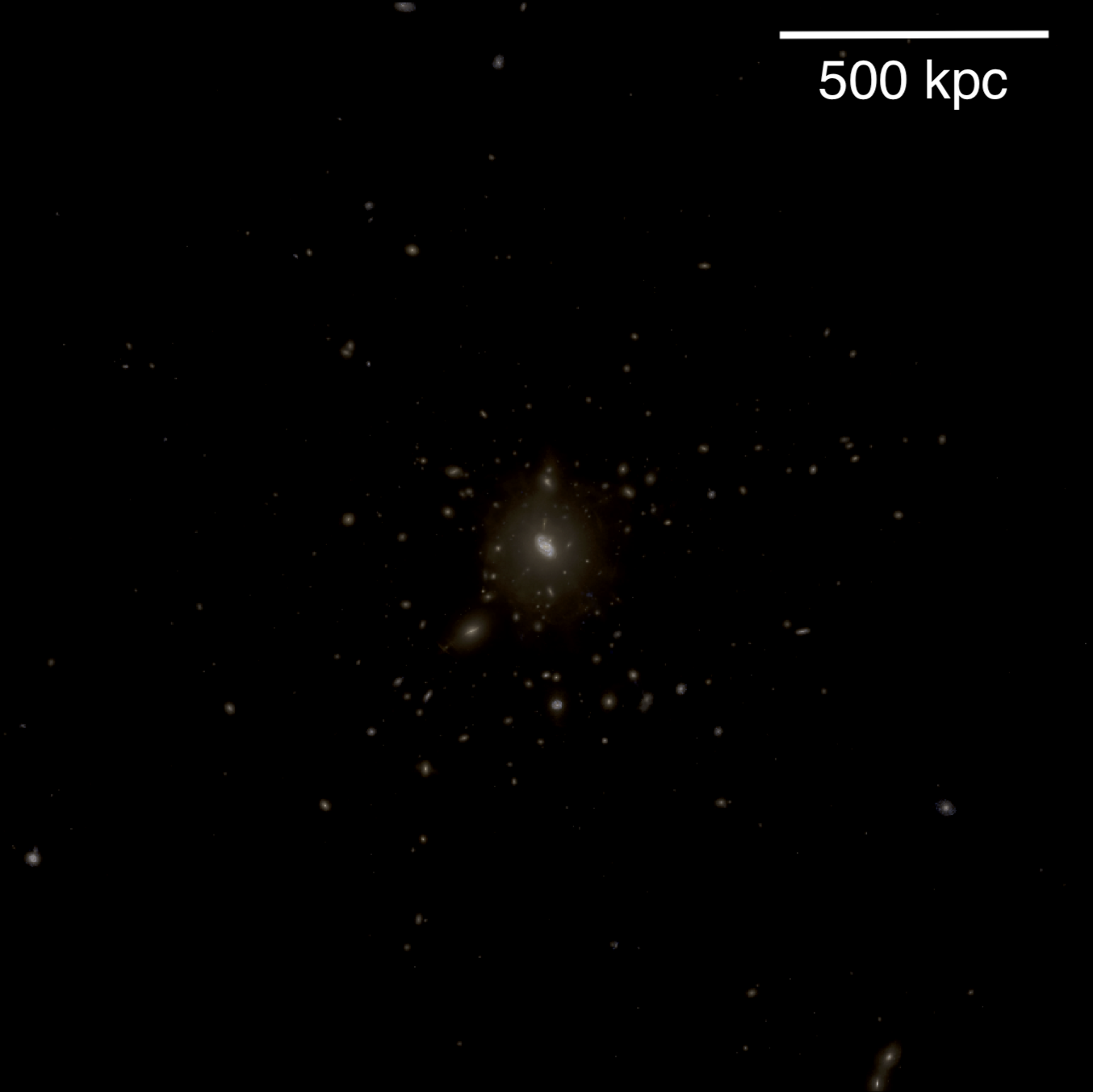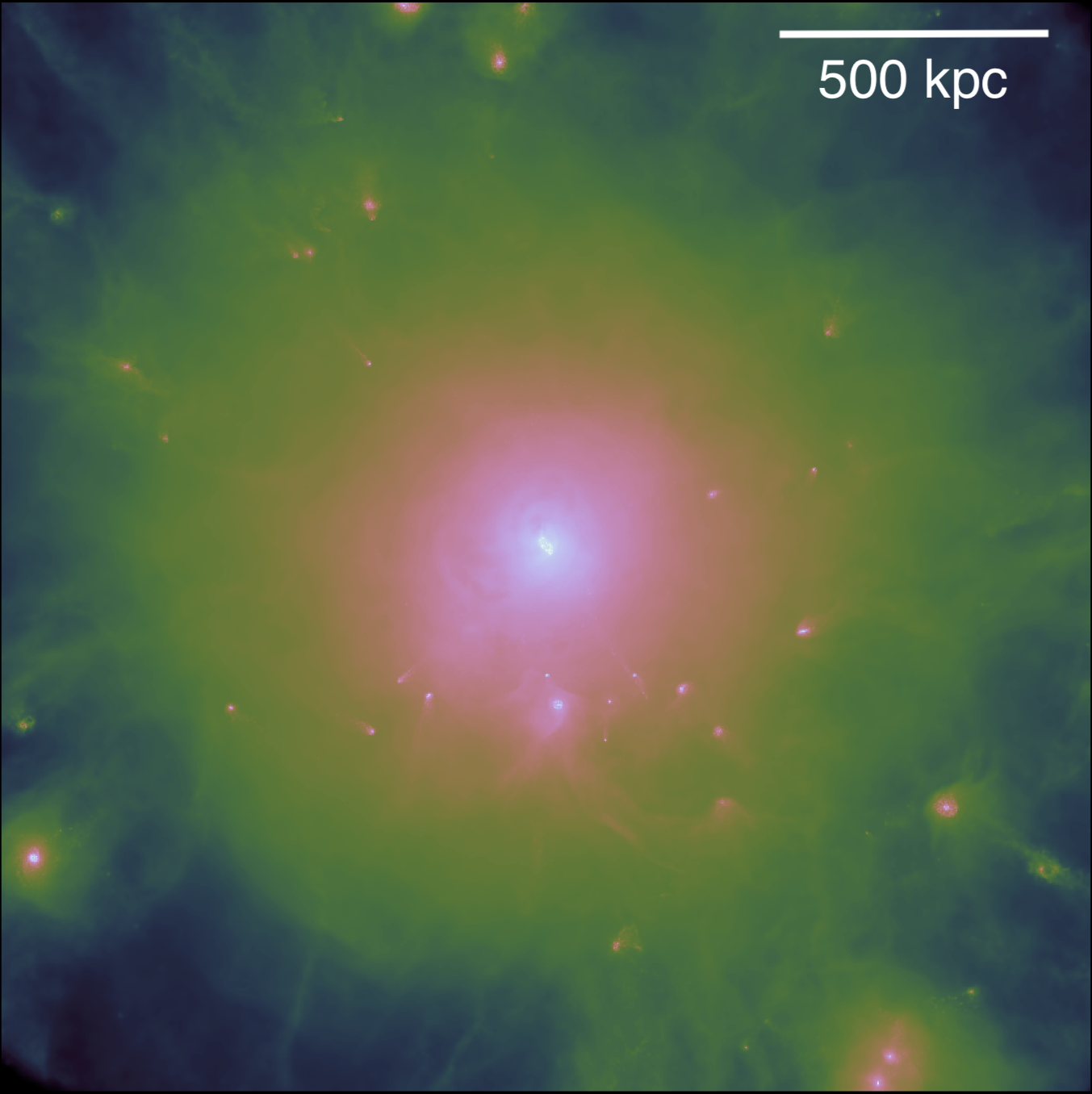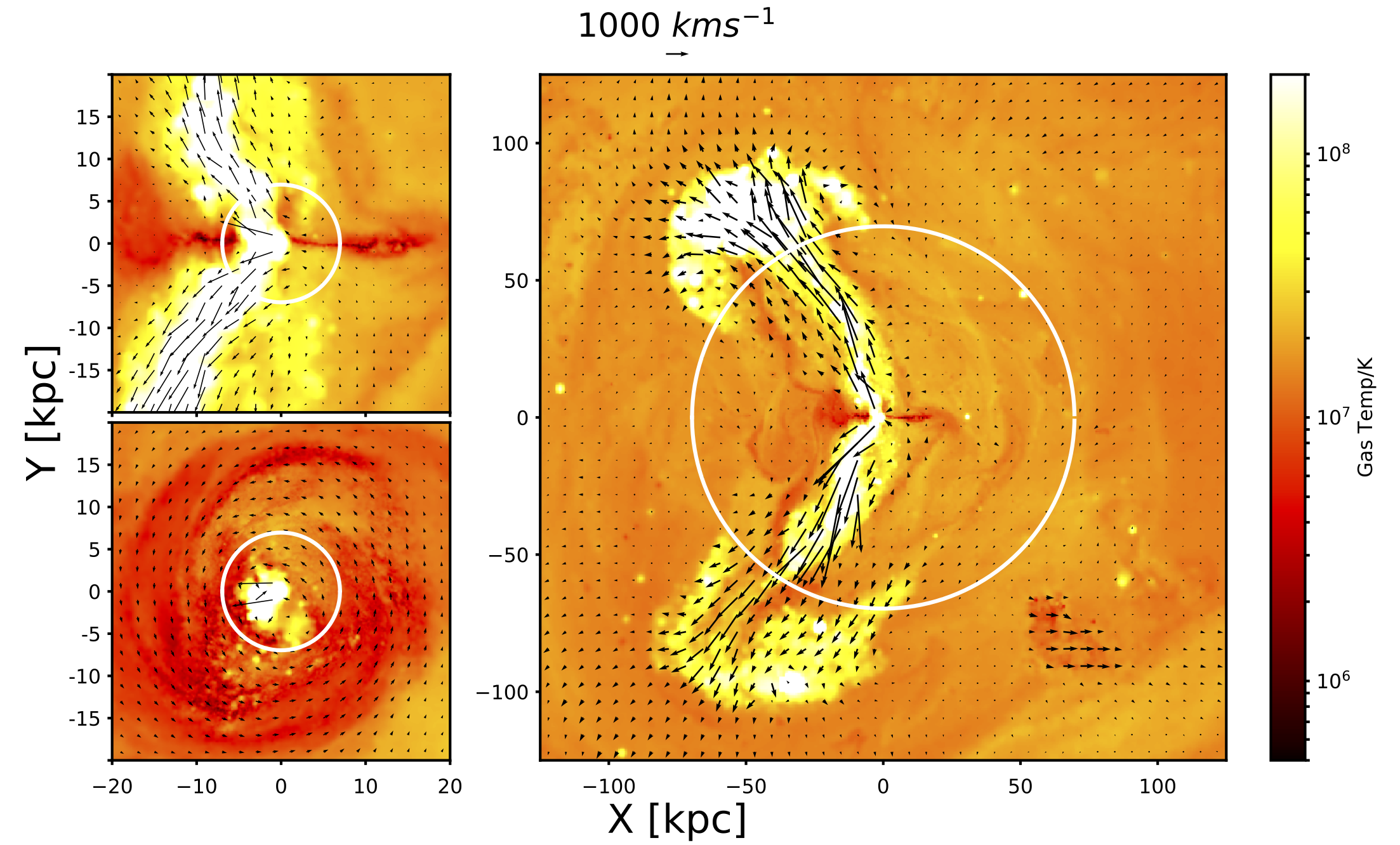RomulusC: Galaxy Evolution in Dense Environments
How is galaxy evolution different in dense environments like groups and clusters?
Overview
Galaxy clusters and groups are unique places to study galaxy evolution because of their high density and the fact that, in their centers, they host the most massive galaxies in the Universe. Understanding how star formation is regulated in the central galaxies and how the intercluster medium (ICM) affects the evolution of other member galaxies are important areas of current research. The RomulusC simulation, the highest resolution cosmological simulation of a galaxy cluster run to date, will allow us to understand the evolution of galaxies in dense environments in more detail than ever before. It is the first of several simulations we are running focused on studying the most massive structures in the Universe at unprecedented resolution. I am analyzing these simulations in collaboration with many individuals, including Tom Quinn (U of Washington), Iryna Butsky (U of Washington), Arif Babul (U of Victoria), Priyamvada Natarajan (Yale), Angelo Ricarte (Yale), Daisuke Nagai (Yale), Urmila Chadayammuri (Yale), Ferah Munshi (Oklahoma), Alyson Brooks (Rutgers), and Anna Wright (Rutgers).



A Predictive Model for Galaxy Evolution in Clusters
RomulusC is run with the same resolution and physics as the Romulus25 simulation. The physics of the simulation have been optimized to reproduce observations of galaxies ranging from dwarf to Milky Way masses. There has been no attempt to calibrate the simulation to produce realistic galaxy clusters. Further, the model for AGN feedback that I have implemented does not assume anything about the nature of large-scale outflows driven by the SMBH. In other words, the properties of cluster galaxies, the nature of AGN outflows, and the internal structure of the cluster are purely predictions of the simulation.
AGN Feedback and the Evolution of the Brightest Cluster Galaxy
Central brightest cluster galaxies are the most massive galaxies in the Universe. In RomulusC, we find that large-scale, columnated outflows driven by the central AGN is able to successfully regulate star formation in the BCG. I am using RomulusC to study how AGN feedback interacts with the ICM on large scales and how this interaction regulates cooling and star formation in the BCG. This work is being done in collaboration with In collaboration with Tom Quinn (U of Washington), Arif Babul (U of Victoria), Daisuke Nagai (Yale), and Urmila Chadayammuri (Yale)

Studying Cluster Galaxies
The unprecedented resolution of RomulusC, and the fact that our sub-grid models produce a broadly realistic inter-cluster medium (ICM), means that we can study galaxy evolution in dense environments with more detail than ever before. With Angelo Ricarte (Yale) and Priyamvada Natarajan (Yale), we are looking at the role of ram pressure stripping in quenching star formation as well as driving (and eventually hindering) black hole growth in cluster galaxies. In collaboration with Anna Wright (Rutgers), Alyson Brooks (Rutgers), Ferah Munshi (Oklahoma), and Daisuke Nagai (Yale) I am examining the evolution and structure of dwarf galaxies in both the field (Romulus25) and cluster environments (RomulusC).

More Simulations to Come
In collaboration with Tom Quinn (U of Washington), I am expanding the RomulusC series to include more groups and clusters of mass 2x1013 to 1015 Msun. More on this to come!
© 2018 Michael Tremmel | Based on the template design by Andreas Viklund